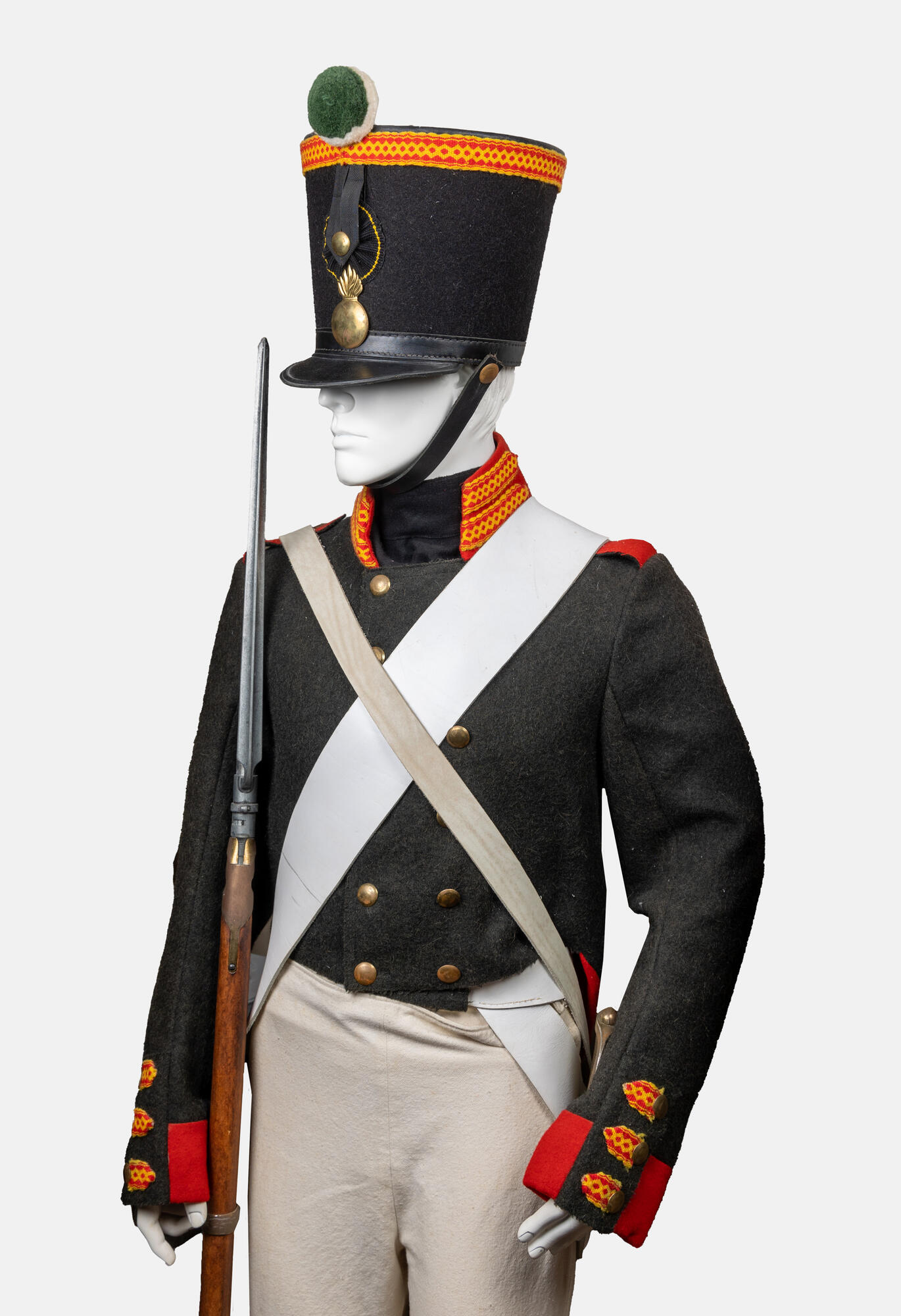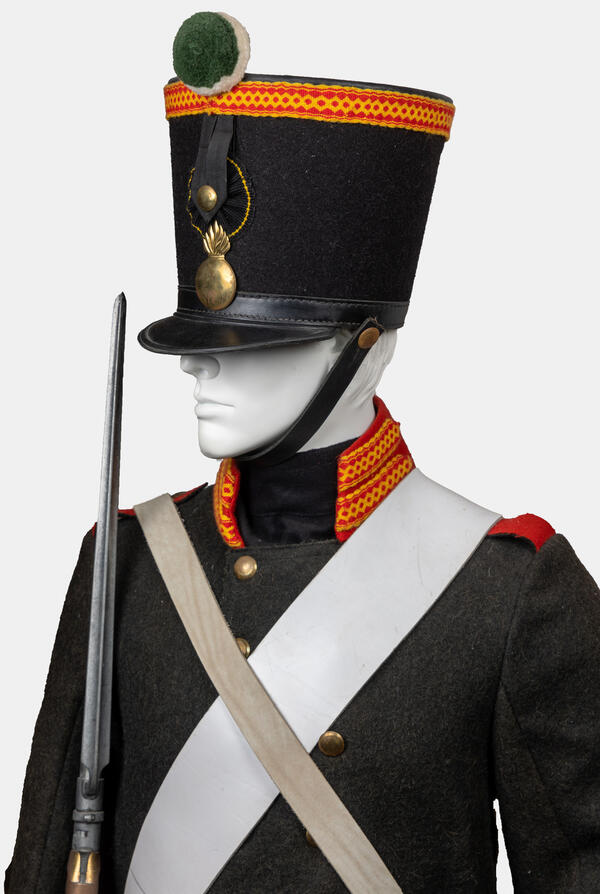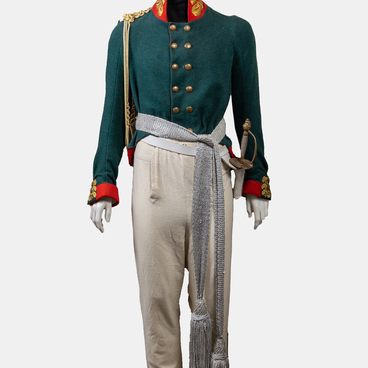The exhibition “Tilsit Peace Treaty and Queen Louise” presents a reconstruction of the uniform of a private of the Preobrazhensky Life Guards Regiment of the early 19th century. The uniform was created as part of the project “War and Peace” in 2007 and consists of a shako, tunic, summer canvas pants, tie, cartridge pouch with a shoulder strap, sword-belt, knapsack, model rifle, and model of a soldier’s backsword.
The Preobrazhensky Regiment is one of the most aristocratic in the Russian army. The enlistment of officers and generals in its ranks was a form of reward. Heirs to the throne underwent military training in the regiment. The commanders, and, from the early 19th century, the chiefs of the regiment were the reigning monarchs.
Peter I formed the Preobrazhensky Regiment in 1691 from the inhabitants of the amusement settlement of Preobrazhenskoye, hence the regiment’s name. The tsar personally participated in the maneuvers of the regiment in Kozhukhovo under the pseudonym of Peter Alexeyev, in the rank of bombardier. At the very end of the 17th century, Peter I decided to reorganize the Russian army according to the European model. In 1700, the regiment was named the Preobrazhensky Life Guards Regiment. After Peter I died, the regiment took an active part in the ascent to the throne of Catherine in 1725 and in the following palace coups. The Preobrazhensky Regiment participated in all military campaigns of tsarist Russia, was disbanded in January 1918, and then was reconstituted as part of the White Guard troops. By 1930, more than 120 men who had ever served in the regiment were living in exile. The regimental association in the Parisian emigration as part of the Guards Association and the Russian All-Military Union was called the “Union of Preobrazhentsy”. As of 1951, it consisted of 47 members and 10 honorary members. The Regimental Association in the emigration worked until the 1970s; after the death of the last officers of the regiment it was transformed into the Union of the Descendants of the Preobrazhensky Regiment.
From 1723, the regiment
was stationed in St. Petersburg, at first in private quarters, and from the
late 1730s — in the regimental quarter in the area between modern Liteyny
prospect, Zhukovsky Street, Suvorovsky Avenue and Tchaikovsky Street. In the
early 19th century, a complex of barracks and regimental buildings (hospital,
officer’s house, riding hall, and other buildings) was built in the block
between present-day Kirochnaya, Radishcheva, Paradnaya Streets, and Vilensky
Lane. The construction of the stone barracks started in 1801. The project was
entrusted to the architect Fyodor Volkov. The regimental church — the Cathedral
of the Transfiguration — was built in 1829, based on the project of Vasily
Stasov on the site of an earlier church.



